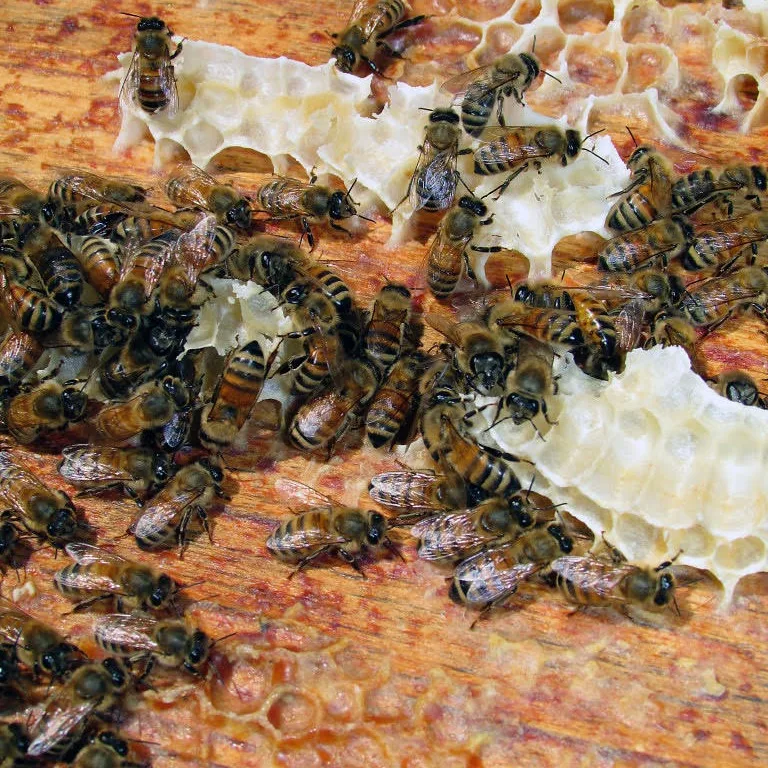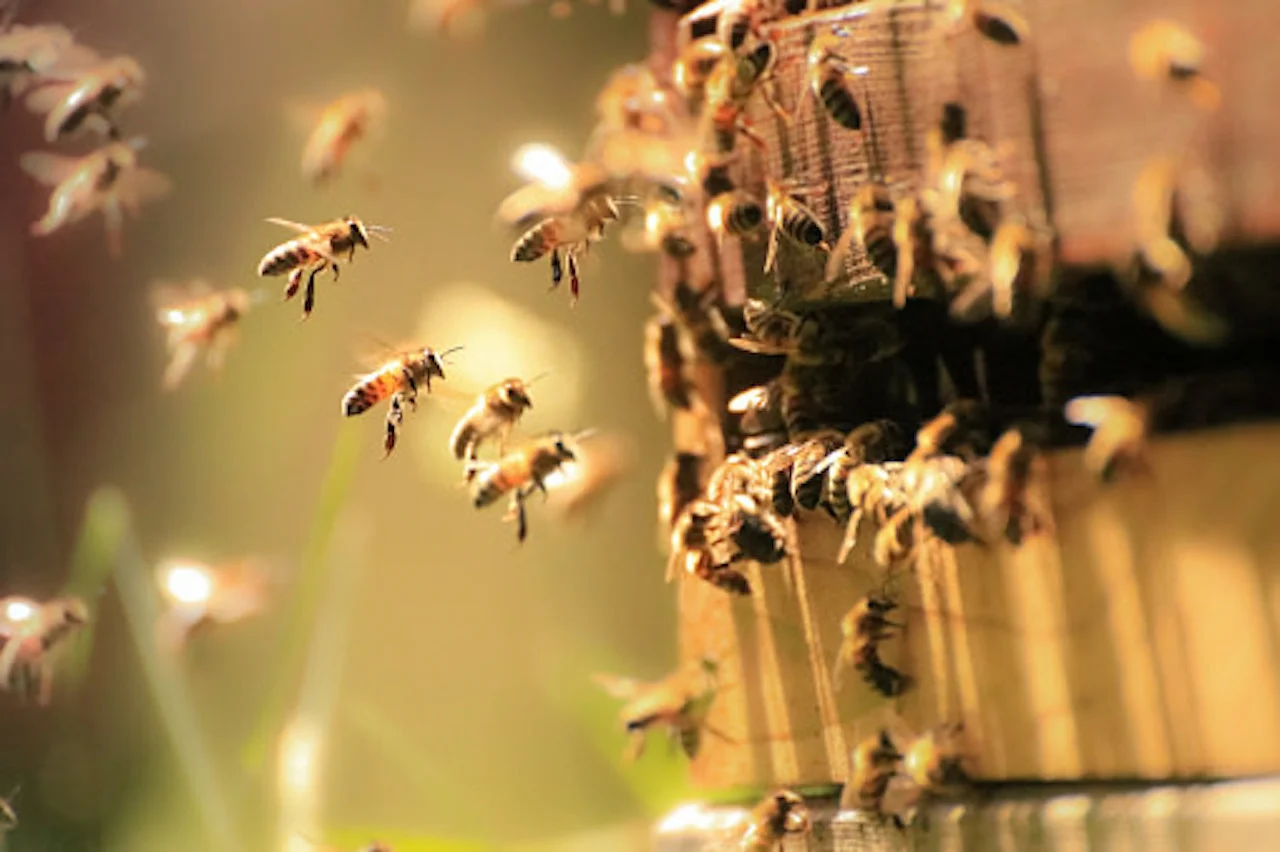
Microplastics found on honeybees, but no clear evidence of effects
For the first time, the research has indicated that worker bees can serve as active carriers of microplastics.
It's no secret that honeybees carry pollen on their bodies to help fertilize crops, but they are also transporting microplastics that they are picking up in the air.
Thirteen different types of synthetic polymers were found on the bodies of honeybees from apiaries in Copenhagen, Denmark, as well as in surrounding semi-urban and rural areas, according to a recently published study conducted in the Scandinavian country.
SEE ALSO: Honeybees can pose a threat to wild bees, here's how
The researchers found that as bees interact with the nearby environment while they forage, they are also collecting airborne pollutants. This is the first time that research has indicated that worker bees can serve as active carriers of microplastics.
"Our results demonstrated the presence of microplastics attached to the body of the honeybees, [which] opens a new research pathway to their use as active biosamplers for anthropogenic pollution," the authors said in the study.

(Nathan Howes)
MOST MICROPLASTICS WERE FRAGMENTS
Analysis of the bees verified 13 synthetic polymers, with most belonging to polyester, while polyethylene and polyvinyl chloride were also present. The microplastics were mostly fragments (52 per cent) and fibres (38 per cent).
"The highest load corresponded to urban apiaries, but comparable number of microplastics was found in hives from suburban and rural areas, which can be explained by the presence of urban settlements inside the foraging range of worker bees, and to the easy dispersion of small microplastics by wind," the study noted.
IMPACTS ON BEES NOT EVIDENT
While the effects of plastic on land and marine environments have been widely documented, their impacts on bees is less evident.
A study released in January 2021 was conducted to determine potential risks that microplastics pose to honeybees. The pollinators were given polystyrene microplastics for two weeks, but the analysis revealed it only changed their mortality rate when in combination with other chemicals.

(Getty Images)
The plastics mixed with other toxins did modify the bees’ microbiome — a collection of gut bacteria needed to perform basic biological functions — to a certain extent that the research team concluded the alteration may result in substantial health risks.
For example, when digesting polystyrene microplastics with tetracycline, a typical antibiotic incorporated by beekeepers to prevent a larval disease, the bees’ mortality rate did rise substantially — from less than 20 per cent to around 55 per cent.
It's not just the bodies of honeybees that have shown traces of plastics.
Researchers in several countries have seen leafcutter bees collecting trace amounts from bags, packaging, and other plastic materials. They were using them to line their nests. An American study also indicated they cut nesting material from plastic-flagging used for surveying or marking construction sites.
Thumbnail courtesy of Nathan Howes.
Find Nathan Howes on Twitter.

